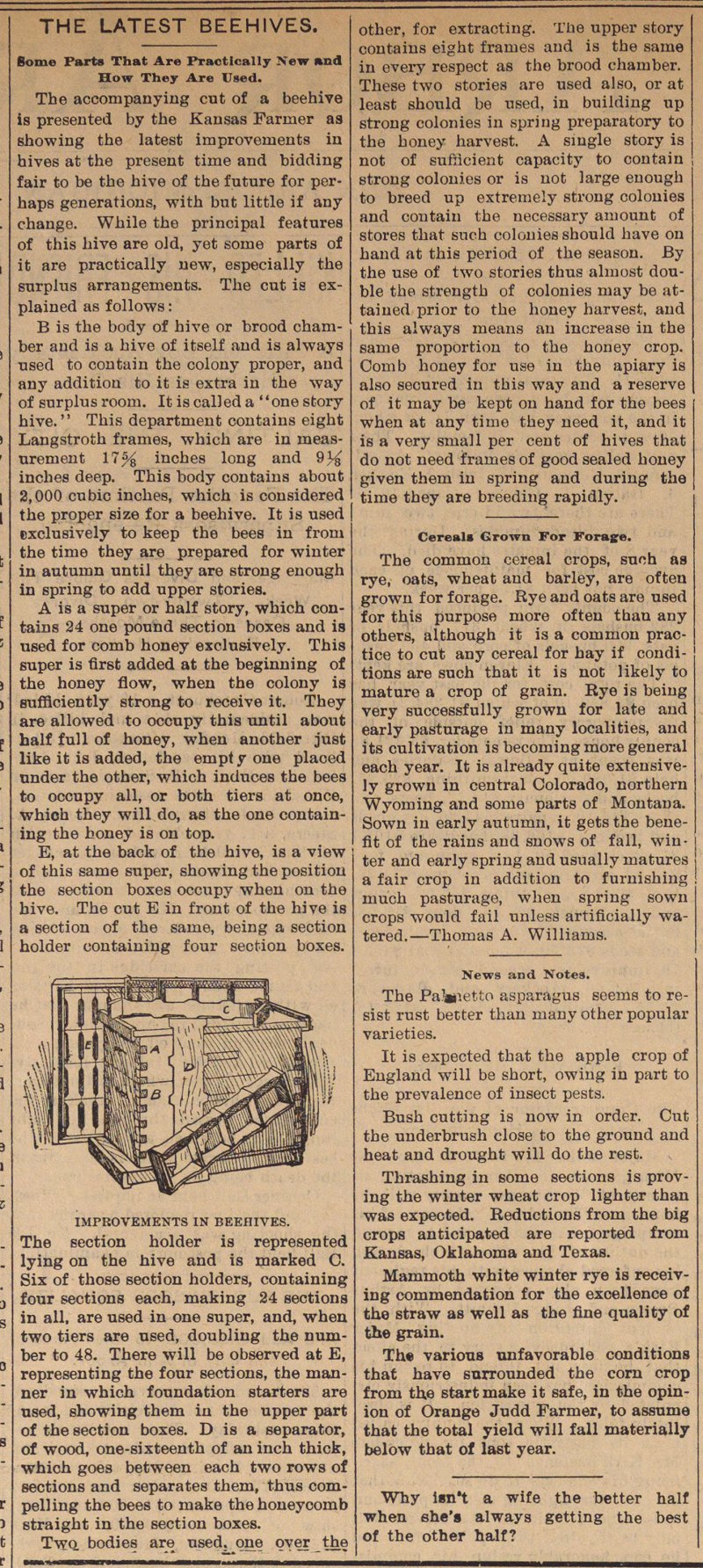The Latest Beehives

The accompanying cut of a beehive is presented by the Kansas Farmer as showing the latest improvements in hives at the present time and bidding fair to be the hive of the future for perhaps generations, with but little if any change. While the principal features of this hive are old, yet some parts of it are practically new, especially the surplus arrangements. The cut is explained as follows :
B is the body of hive or brood chamber and is a hive of itself and is always used to contain the colony proper, and any addition to it is extra in the way of surplus room. It is called a "one story hive." This department contains eight Langstroth frames, which are in measurement 17&5/8s inches long and 9&1/8s inches deep. This body contains about 2,000 cubic inches, which is considered the proper size for a beehive. It is used exclusively to keep the bees in from the time they are prepared for winter in autumn until they are strong enough in spring to add upper stories.
A is a super or half story, which contains 24 one pound section boxes and is used for comb honey exclusively. This super is first added at the beginning of the honey flow, when the colony is sufficiently strong to receive it. They are allowed to occupy this until about half full of honey, when another just like it is added, the empty one placed under the other, which induces the bees to occupy all, or both tiers at once, which they will do, as the one containing the honey is on top.
E, at the back of the hive, is a view of this same super, showing the position the section boxes occupy when on the hive. The cut E in front of the hive is a section of the same, being a section holder containing four section boxes. The section holder is represented lying on the hive and is marked C. Six of those section holders, containing four sections each, making 24 sections in all, are used in one super, and, when two tiers are used, doubling the number to 48. There will be observed at E, representing the four sections, the manner in which foundation starters are used, showing them in the upper part of the section boxes. D is a separator, of wood, one-sixteenth of an inch thick, which goes between each two rows of sections and separates them, thus compelling the bees to make the honeycomb straight in the section boxes.
Two. bodies are used. one over the other, for extracting. The upper story contains eight frames and is the same in every respect as the brood chamber. These two stories are used also, or at least should be used, in building up strong colonies in spring preparatory to the boney harvest. A single story is not of sufficient capacity to contain strong colonies or is not large enough to breed up extremely strong colonies and contain the necessary amount of stores that such colonies should have on hand at this period of the season. By the use of two stories thus almost double the strength of colonies may be attained prior to the honey harvest, and this always means an increase in the same proportion to the honey crop. Comb honey for use in the apiary is also secured in this way and a reserve of it may be kept on hand for the bees when at any time they need it, and it is a very small per cent of hives that do not need frames of good sealed honey given them in spring and during the time they are breeding rapidly.
Article
Subjects
Old News
Ann Arbor Argus-Democrat